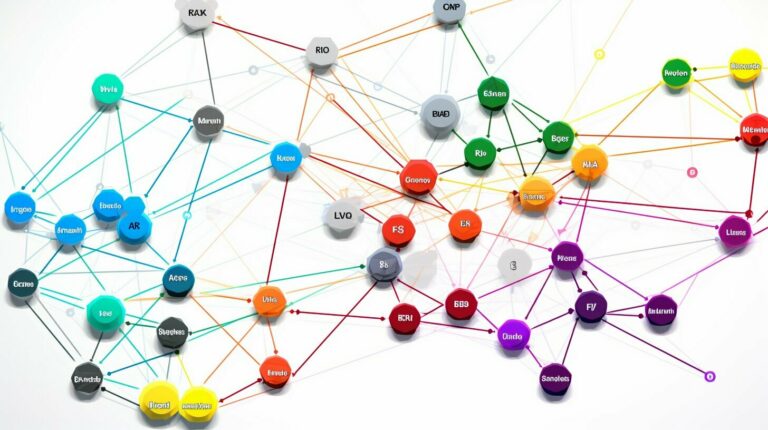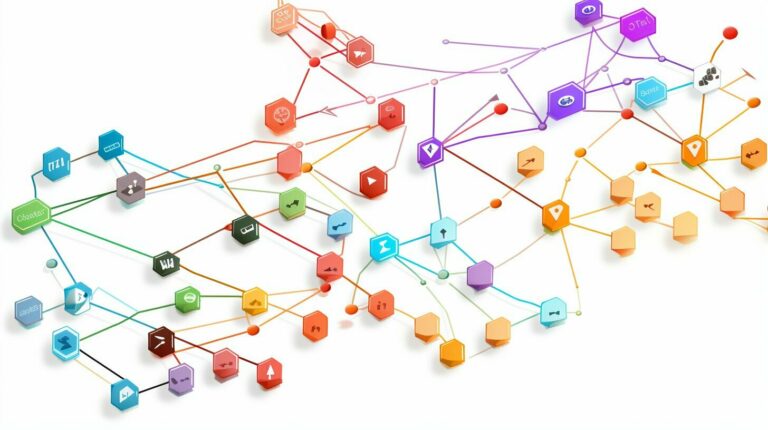Microservices have revolutionized the way organizations develop and deploy their applications. By breaking down monolithic applications into smaller, independent services, microservices enable greater agility, scalability, and faster time-to-market. However, this new architecture also introduces new security challenges and vulnerabilities that organizations must address to protect their systems and sensitive data.
In this article, we will explore the topic of microservices security and provide insights into the best practices and strategies for enhancing security. We will cover the architectural considerations, common challenges and vulnerabilities faced by organizations, and practical aspects of implementing microservices security. By the end of this article, you will have a better understanding of how to safeguard your microservices architectures and keep your systems secure.
Key Takeaways:
- Microservices architectures require new security measures to protect against emerging threats and vulnerabilities.
- Best practices for microservices security include authentication and authorization, encryption, secure communication, monitoring and logging, and implementing security patterns and frameworks.
- Implementing robust security measures requires careful planning, risk assessments, threat modeling, secure coding practices, and continuous security testing.
Understanding Microservices Security
As organizations increasingly adopt microservices architectures, securing these systems becomes a critical consideration. Microservices are small, independent components that work together to form a larger application. While this approach offers many benefits in terms of scalability, flexibility, and agility, it also introduces new challenges and vulnerabilities.
Microservices Security Architecture
Securing microservices requires a multi-layered approach that encompasses the entire architecture. Organizations need to consider factors such as network security, application security, and data security. They must also adhere to security best practices at every level of the architecture, including individual microservices, API gateways, and orchestration layers.
Additionally, microservices create complex interdependencies between components, increasing the attack surface for potential security threats. This makes it essential to adopt a comprehensive security strategy that accounts for all possible vulnerabilities and threats.
Microservices Security Challenges
Maintaining the security of microservices architectures can be challenging due to various factors. One significant challenge is the need to secure multiple components and services that are in constant communication with each other. This means that a vulnerability in one microservice can impact the security of the entire architecture.
Another challenge stems from the distributed nature of microservices architectures. As microservices are often deployed across multiple locations, it can be difficult to ensure consistent security policies and measures across all components.
Microservices Security Vulnerabilities
Microservices are susceptible to various security vulnerabilities that can compromise the confidentiality, integrity, and availability of data. For example, weak authentication mechanisms, insufficient encryption, insecure APIs, and unsecured communication channels are all common vulnerabilities that can be exploited by threat actors to gain unauthorized access to systems or steal sensitive data.
“Securing microservices requires a multi-layered approach that encompasses the entire architecture.”
Additionally, microservices architectures are particularly vulnerable to threats such as distributed denial of service (DDoS) attacks and container-based attacks. These attacks can cause significant disruption to systems and services, resulting in reputational damage and financial losses for organizations.
Overall, it is essential to understand the challenges and vulnerabilities associated with microservices security to develop effective strategies for safeguarding these architectures. The next section will explore the best practices that organizations can adopt to enhance the security of their microservices.
Best Practices for Microservices Security
Securing microservices architectures is paramount in today’s digital landscape. Organizations need to adopt best practices that enhance the security of their microservices. This section provides insights into the best practices for microservices security that organizations can implement to safeguard their systems.
Authentication and Authorization
Implementing authentication and authorization protocols is crucial for securing microservices. Organizations should use identity and access management (IAM) systems to control who can access their microservices. Access should be granted based on roles and responsibilities, and the principle of least privilege should be applied. Additionally, multi-factor authentication and password policies can further strengthen authentication and authorization.
Encryption
Encrypting sensitive data is another vital aspect of microservices security. Organizations should use industry-standard encryption protocols such as AES and RSA to safeguard their data. They can also implement techniques like data masking and tokenization to further bolster security.
Secure Communication
Communicating securely between microservices is critical for preventing unauthorized access and data breaches. Organizations should use secure communication protocols such as HTTPS and SSL/TLS and implement transport layer security (TLS) to encrypt data in transit. Furthermore, they can use mutual authentication to verify the identity of communicating parties and prevent man-in-the-middle attacks.
Monitoring and Logging
Monitoring and logging are essential for maintaining a secure microservices environment. Organizations should implement tools and solutions that enable them to monitor microservices in real-time and detect any anomalies or suspicious activity. They should also implement logging to keep track of access attempts and behavior, and use advanced analytics tools to identify potential threats and vulnerabilities.
Security Patterns and Frameworks
Implementing security patterns and frameworks can further enhance the security of microservices architectures. Organizations can use established patterns and frameworks such as OAuth, OpenID Connect, and JSON Web Tokens to secure their systems. Additionally, they can use frameworks specifically designed for microservices security, such as Istio and Envoy, to implement secure communication, authentication, authorization, and monitoring.
Conclusion
By adopting the best practices discussed in this section, organizations can ensure the integrity and confidentiality of their microservices. Authentication and authorization, encryption, secure communication, monitoring and logging, and implementing security patterns and frameworks are all crucial for securing microservices architectures.
Implementing Microservices Security
Implementing effective security measures is critical for safeguarding microservices architectures against potential threats. In this section, we will discuss the practical aspects of implementing microservices security.
Establishing a Robust Security Framework
To establish a robust security framework, organizations should conduct comprehensive risk assessments and threat modeling exercises. This will help identify potential security risks and vulnerabilities in the microservices architecture and enable the development of targeted security measures.
Secure coding practices, such as input validation and avoiding hard-coded credentials, should be implemented to mitigate common security vulnerabilities. Additionally, organizations should consider adopting industry-standard security frameworks, such as OWASP, to guide their security practices.
Continuous Security Testing
Continuous security testing is an integral part of any robust microservices security framework. This ensures that security measures are tested and refined over time to keep pace with emerging threats. Automated security testing should be used to identify and mitigate vulnerabilities in the microservices architecture.
Organizations should also prioritize the integration of security into their DevOps processes, adopting a DevSecOps approach. This involves incorporating security into every stage of the software development life cycle, from design to deployment, to ensure the ongoing security of the microservices architecture.
Conclusion
Implementing effective security measures is crucial for ensuring the integrity and confidentiality of microservices architectures. By establishing a robust security framework and adopting a DevSecOps approach, organizations can mitigate potential security risks and stay ahead of emerging threats.
Conclusion
In today’s rapidly evolving digital landscape, securing microservices architectures is more critical than ever. Organizations must adopt a proactive approach by implementing effective security measures and staying abreast of emerging threats.
By following the best practices outlined in this article, including authentication and authorization, encryption, secure communication, monitoring and logging, and implementing security patterns and frameworks, organizations can safeguard their microservices architectures from potential security breaches.
Furthermore, implementing a robust security framework that includes risk assessments, threat modeling, secure coding practices, and continuous security testing can ensure the ongoing security of microservices architectures.
It is imperative that organizations prioritize microservices security to protect their confidential data, maintain customer trust, and avoid potential regulatory penalties. By prioritizing security, organizations can confidently leverage the benefits of microservices, including increased agility, scalability, and resilience, without compromising their security posture.







